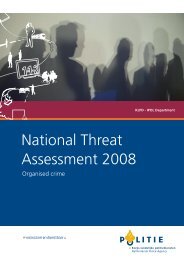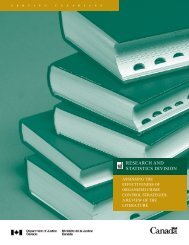5. Civil Society against Corruption (PDF, 293 kb)
5. Civil Society against Corruption (PDF, 293 kb)
5. Civil Society against Corruption (PDF, 293 kb)
You also want an ePaper? Increase the reach of your titles
YUMPU automatically turns print PDFs into web optimized ePapers that Google loves.
CIVIL SOCIETY AGAINST CORRUPTION 109<br />
advocacy campaigns”. The strategy acknowledges the important role<br />
of Coalition 2000 and Transparency International-Bulgaria.<br />
• The anti-corruption experience of the Coalition has a growing<br />
international recognition. Regional anti-corruption projects such as<br />
Southeast European Legal Development Initiative (SELDI) have drawn<br />
on the public-private model of Coalition 2000 in bringing together<br />
NGOs from a number of countries in the region.<br />
<strong>5.</strong>2. The Role of Media<br />
in Anti-<strong>Corruption</strong><br />
The media play a very important role in shaping popular perceptions<br />
and attitudes to corruption. As shown by the Coalition 2000 <strong>Corruption</strong><br />
Monitoring System, roughly half of the adult Bulgarian citizens get<br />
information about instances of corruption from broadcast and print<br />
media.<br />
CHART 31. AVERAGE MONTHLY NUMBER OF CORRUPTION-RELATED ITEMS<br />
IN THE MEDIA<br />
June ‘04<br />
723<br />
May ‘04<br />
739<br />
April ‘04<br />
720<br />
March ‘04<br />
831<br />
February ‘04<br />
January ‘04<br />
599<br />
December ‘03<br />
691<br />
November ‘03<br />
679<br />
October ‘03<br />
September ‘03<br />
740<br />
August ‘03<br />
501<br />
July ‘03<br />
700<br />
June ‘03<br />
782<br />
961<br />
1 050<br />
The regular media monitoring<br />
conducted by Coalition 2000 9<br />
indicates that both print and<br />
electronic media devote increased<br />
attention to corruption.<br />
While with the emergence<br />
of anti-corruption initiatives in<br />
1998 the average monthly number<br />
of corruption-related items<br />
was about 150-200, in 2002 it<br />
reached 400 pieces, and by<br />
2004 it had risen to more than<br />
700 on average, regardless of<br />
whether the respective period<br />
was marked by a major corruption-related<br />
news story or<br />
public scandal.<br />
May ‘03<br />
802<br />
April ‘03<br />
656<br />
March ‘03<br />
410<br />
February ‘03<br />
682<br />
January ‘03<br />
599<br />
December ‘02<br />
November ‘02<br />
October ‘02<br />
555<br />
583<br />
617<br />
September ‘02<br />
306<br />
August ‘02<br />
July ‘02<br />
443<br />
494<br />
June ‘02<br />
334<br />
0 200 400 600 800 1 000 1 200<br />
Source: Media Monitoring by Coalition 2000<br />
9<br />
The monitoring covered 32 national<br />
media, of which 10 dailies, 8 weeklies,<br />
7 internet media, all 3 national<br />
television stations, and 4 radio stations.<br />
Forty-eight weekly and 12 monthly<br />
reports have been prepared, as well<br />
as 7 topical analyses on some of the<br />
corruption-related stories that received<br />
most extensive media coverage (such<br />
as corruption in higher education, the<br />
Sofiyski Imoti affair, the selling of lowprice<br />
flats to government officials, the<br />
scandals at the National Protection<br />
Service, the grain siphoned off from<br />
the strategic grain reserve, etc.).








